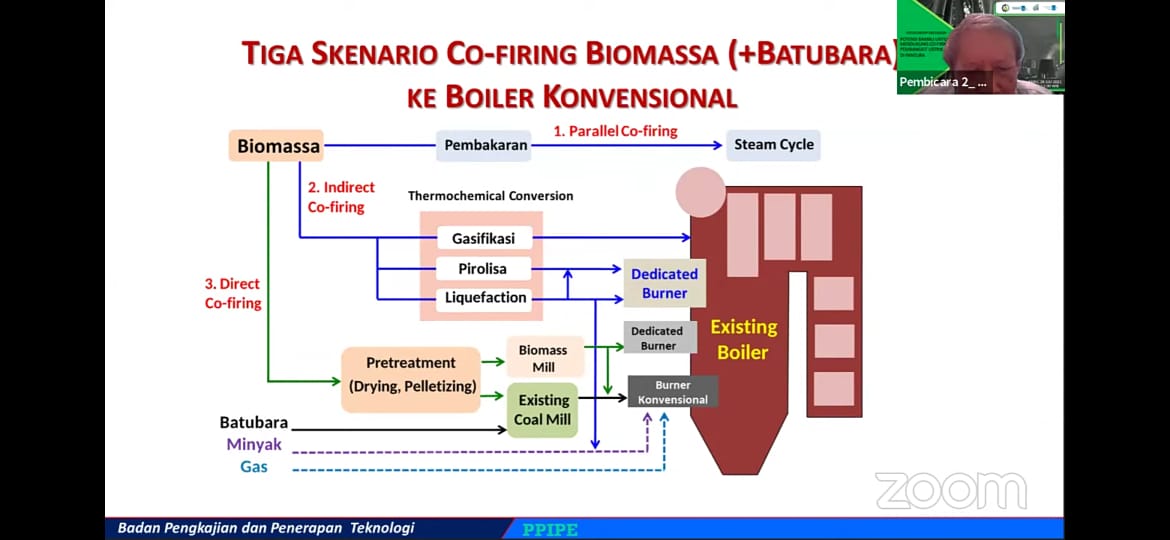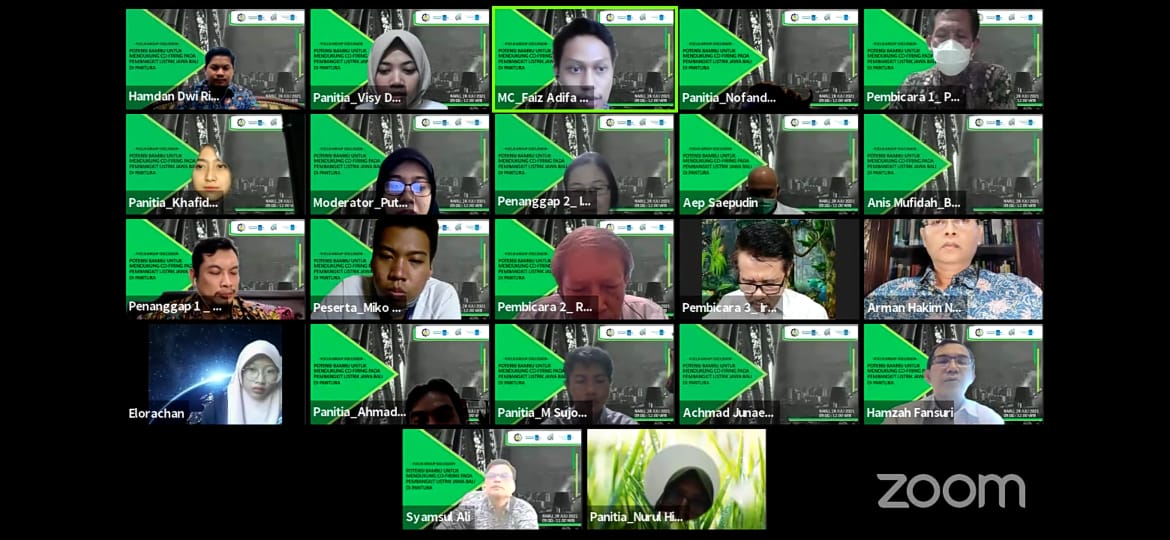ITS Supports Bamboo Utilization in PLTU Co-Firing
ITS Campus, ITS News – A quick response was given by Institut Teknologi Sepuluh Nopember (ITS) to support the realization of net zero emissions as stated in the Nationally Determined Contribution (NDC) through PLTU co-firing . For this reason, the Community Service Team (Abmas) of the ITS Center for Public, Business and Industrial Policy (PKPBI) held an online Focus Group Discussion (FGD) to provide input as well as exchange ideas regarding the co-firing of PLTU that will utilize the potential of bamboo, Wednesday (28/7).
This FGD collaborated with PT Pembangkitan Jawa Bali (PJB), researchers from the Agency for the Assessment and Application of Technology (BPPT), the Forestry Service of East Java Province. This discussion focuses on the role of universities in supporting the government’s realization in running NDC through co-firing of biomass in coal-fired power plants.

The Explanation of the types of PLTU and biomass co-firing as a form of government directive according to the Nationally Determined Contribution (NDC)
The attending presenters are Teguh Widjayanto MT as a representative from PT PJB, BPPT RI researcher Ir Rohmadi Ridlo MEng, and representatives of the East Java Provincial Forestry Service Ir Toat Tridjono MSi. In addition, ITS Mechanical Engineering lecturer Ary Bachtiar Ph.D. and ITS Environmental Engineering lecturer IIDA Warmadewanthi Ph.D. were present as responders.
Teguh Widjayanto explained, PJB is a subsidiary of the State Electricity Generator (PLN), an electricity producer that supplies electricity needs in Banten, DKI Jakarta, West Java Yogyakarta, East Java, and Bali. Currently, PT PJB manages six power plants in Java, with a total capacity of 6,511 megawatts with a total managed electricity of 20,941 megawatts.
He said PT PJB fully supports the realization of net-zero emissions through the co-firing of the PLTU. Currently, the government is preparing an emission reduction program in the power generation sub-sector by stopping the operation of a 53 GW coal-fired power plant between 2025-2045. “This is where the idea and input came from to use the potential of bamboo to support the co-firing of PLTU,” he explained.
Until the end of 2019, the distribution of New Renewable Energy (EBT) reached 9.15 percent, of which 6.2 percent came from EBT PLT, and 2.95 percent came from biofuel (biodiesel). Meanwhile, in 2025 the distribution of NRE is targeted to be 23 percent, where NRE PLT is targeted to provide a portion of 13-15 percent, Bioenergy PLT 2-5 percent, and BBN 2-3 percent.
Biomass development that will be optimized is sourced from bamboo trees which are part of energy plants. “We will try to be able to do co-firing with biomass at the power plant, and hopefully, we can achieve the target of at least 1-3 percent in 2025,” said Teguh.

PLTU co-firing scenario that will be used as the realization of the government’s public policy
Meanwhile, Rohmadi Ridlo revealed that this co-firing is used as a substitute for coal with biomass at a certain ratio as fuel while still paying attention to the quality and efficiency of power plants. In various countries, especially those that set policies for more optimal use of NRE, this technique is used to reduce the use of fossil energy, as well as to support policies to reduce greenhouse gas (GHG) emissions.
The researcher, who is familiarly called Ridlo explained, to support the implementation of co-firing, one of the efforts that can be done is to prepare the availability of biomass resources in large quantities. Biomass which is quite potential in Indonesia, is bamboo. However, it still needs to be done to provide an overview of the potential of bamboo to support co-firing at the Java-Bali Power Plant on the north coast (Pantura).
This is also supported by Toat Tridjono, related to co-firing with bamboo, the potential volume of bamboo currently reaches 10.4 million tons of bamboo with the assumption that the potential of bamboo is 5 tons per hectare or 7.5 kilograms per clump or 133 clumps per tonne. . “Because of the large potential of bamboo and the low volume of water it contains, it makes it easier to use it as a co-firing material ,” explained Toat.
The existence of ITS as the most innovative university in Indonesia continued Toat, can be a trigger for other universities to continue to conduct research and innovation for the progress of the nation. “I really hope that ITS can become a pioneer of innovation in the field of science and technology in Indonesia to answer EBT in Indonesia,” he said with a smile.

Group photo with all FGD participants and the ITS Center for Public Policy, Business and Industry Abmas Team
In addition, he added, it is also necessary to regulate guarantees that innovation and research activities can get sufficient funds from the government. “So there is no longer such a thing as research failure due to lack of funds,” he reminded him.
At the end of the presentation, IIDA Warmadewanthi, Ph.D. as a representative from ITS, said that the output of this FGD would be translated as a university response in ensuring the continuity of the FGD. “Through reports and documentation and will be published in journals to be used as a reference in determining policies, especially in the application of co-firing,” said the lecturer who is familiarly called Wawa. (ITS Public Relations)
Reporter: Fauzan Fakhrizal Azmi
Related News
-
Faithful in Times of Joy and Sorrow, Married Couple Graduate with Doctorates Together at ITS
ITS Campus, ITS News — As though guided by one heart and one soul, Dr Hanugra Aulia Sidharta ST
July 28, 2021 19:07 -
ITS Wins 2024 Project Implementation Award for Commitment to Gender Implementation
ITS Campus, ITS News —Not only technology-oriented, Institut Teknologi Sepuluh Nopember (ITS) also show its commitment to support gender
July 28, 2021 19:07 -
ITS Professor Researched the Role of Human Integration in Sustainable Architecture
ITS Campus, ITS News –The developing era has an impact on many aspects of life, including in the field
July 28, 2021 19:07 -
ITS Sends Off Group for Joint Homecoming to 64 Destination Areas
ITS Campus, ITS News — Approaching Eid al-Fitr, the Sepuluh Nopember Institute of Technology (ITS) is once again facilitating academics who want
July 28, 2021 19:07
